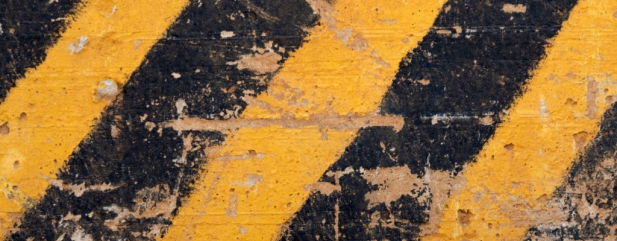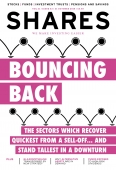Archived article
Please note that tax, investment, pension and ISA rules can change and the information and any views contained in this article may now be inaccurate.
Are you exposed to the Dividend Dangerzone?

Lots of UK companies are offering very meaty dividends, but some investors are nervous about future cuts to payouts.
In total, 26 companies in the FTSE 100 are forecast to pay a dividend at a yield of 6% or more in 2019, but dividend cover, so the amount that earnings covers the dividend payouts, is shrinking. Average dividend cover across the 26 stocks is just 1.56 so investors need to proceed with caution.
RUNNING FOR COVER
According to the Henderson International Income Trust’s (HINT) Global Dividend Cover report, dividend cover is expected to fall to its lowest level in a decade this year, meaning investors will understandably be jittery about what lies under the bonnet of their favoured income funds.
In an ideal world you’d want income stocks to have a dividend cover ratio at two times or above, meaning annual earnings are twice the level of dividends. This provides a safety buffer in case there is an unexpected downturn in trading, or in the
UK or global economy.
However, 10 of the UK’s highest yielding stocks have cover of less than 1.5, meaning they are in the danger zone for potential cuts. Fund investors should be aware of what the income funds they own are investing in and assess their exposure to these stocks. The presence of these companies in a portfolio is not a reason to avoid the fund, but investors just need to understand what they’re exposed to.
By looking at the 83 funds in the UK Equity Income sector with holdings data, we can see which are most exposed to the Dividend Dangerzone companies. Of this group 30 funds hold five or more of the top 10 list in their holdings, while five funds have seven or eight of them.
Oil giants BP (BP.) and Royal Dutch Shell (RDSB) are the most widely held of the stocks in the Dangerzone, with 63 of the funds holding each of the stocks. Both are hefty dividend payers, yielding just shy of 7% each, while they are also predicted to be in the top three dividend payers in cash terms. Meanwhile, just two funds have holdings in Russian miner Evraz (EVR).
ENTERING THE DANGERZONE
Collectively the funds have £7.14bn of investor money in the shares with dividend cover of less than 1.5, equating to 14% of the total assets in the funds. Just five funds have none of the top 10 list in their holdings, one of which is a fund of funds, and the others focus more on mid-cap stocks.
Dividend cover of less than 1.5 does not necessarily mean the dividend will be cut and many managers aim to have a mixture of dividend payers in the portfolio. These include some high payers to provide income today, some that are likely to grow their payouts each year with inflation, and other stocks that will see a higher pace of growth and so might not pay much now but will be the dividend payers of the future.
Most importantly, fund investors who own more than one income fund will also want to check on the overlap between the funds’ holdings, to ensure they are not overly exposed to any one stock,
as any dividend cuts could deliver a heavier blow to their income levels.
Important information:
These articles are provided by Shares magazine which is published by AJ Bell Media, a part of AJ Bell. Shares is not written by AJ Bell.
Shares is provided for your general information and use and is not a personal recommendation to invest. It is not intended to be relied upon by you in making or not making any investment decisions. The investments referred to in these articles will not be suitable for all investors. If in doubt please seek appropriate independent financial advice.
Investors acting on the information in these articles do so at their own risk and AJ Bell Media and its staff do not accept liability for losses suffered by investors as a result of their investment decisions.
 magazine
magazine










